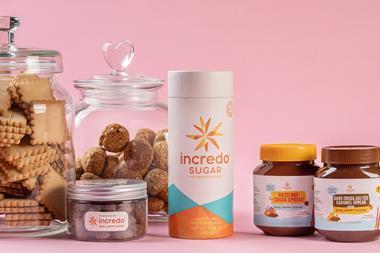
Chris van Tulleken’s book Ultra-Processed People is incendiary stuff – right up to the defeatist conclusion that there’s nothing to be done.
As The Grocer’s editor-in-chief Adam Leyland put it last week, “sadly van Tulleken offers few solutions” – not least for the food industry. And the doctor-turned-presenter is right that, to date, policymakers’ binary emphasis on HFSS and calories has not come close to producing healthier food.
But there is a far more constructive approach to the problem. It’s always been our vision to make a positive impact on the nutrition of a billion people, and we’re some way down that path – with re-engineered UPFs as our ally. We’re inspired by what they make possible – we just need to get past the cynicism of how they’re currently formulated.
Looked at through one lens, UPFs are amazing. Even Henry Dimbleby called them “a miracle”. They reliably feed billions of people, and people love them. So it’s not the fact of producing “food-like substances” efficiently, profitably and affordably that’s the problem.
The resigned shrug at the possibility of positive evolution is much the same shrug you’d have found at Kodak a few decades ago, or from London’s army of dung-sweepers around 1910. It’s a shrug that says: “We know, but what can we do?”
The first thing to do is go upstream, back past the current tidal flow to the original intention. It’s not a horse versus car debate: it’s about the abiding issue of how ever more people get to ever more places. The rapid shift we’re seeing from internal combustion engines to electric vehicles shows it’s not private vehicle use per se that’s the problem: it’s how they’re configured and legislated. Blend the latest technology with positive intent, and public tastes will catch up.
Translated to food, the Tesla-shaped opportunity in our own industry has never been clearer. It’s not about UPF versus healthy, let alone debunked dead-ends like calories and HFSS. It’s just about how we feed our people, in a way that doesn’t cripple our health systems.
Superloaf started with the underlying biology of human nutrition. We then spent six years developing a version of the UK’s best-selling UPF: sliced bread. Superloaf is produced on the same fast machines as other loaves, yet is actively good for you to a degree that no mass-produced sliced bread has ever previously approached. It’s that mythical creature: the nutritious, profitable UPF that people can afford and want to eat more of. We couldn’t be prouder of it and what it represents for the future.
So the UPF problem is simply one of motive. As things are currently set up, the only route to profit in a time of relative plenty is to ensure more people eat more of what you make. That equation leaves zero room for health, but we’re not disheartened by that unpalatable truth. We’ve found the way to minimise the negative effects of UPFs while embracing their vast potential for the positive.
As van Tulleken says: “Science is not a set of rules or facts, but a living argument.” Avoiding the argument by finding legal ways to comply with archaic, self-serving metrics that never worked anyway is the kind of fingers-in-ears answer that cripples health systems.
It should embarrass leaders and shareholders across the industry to know that the same machines that churn out bad UPFs can also churn out good ones, at the same or greater profit.



















1 Readers' comment